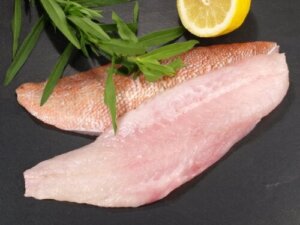Perch: Nutritional Value, Benefits and Controversies


Written and verified by the nutritionist Saúl Sánchez Arias
Perch is a fish that’s imported from the African continent and is usually selected for its low price. However, its nutritional quality isn’t very good and even its consumption may create risks. We’re going to tell you the characteristics of this food and why there are better options available, which are still fairly cheap.
Before starting, it should be noted that the presence of fish in the diet is recommended by almost all nutrition experts. It’s characterized by its high biological value proteins and good quality fatty acids. Likewise, they can provide essential micronutrients, among which minerals such as iodine stand out.
Nutritional value of perch
From a nutritional point of view, perch provides few calories, barely 90 per 100 grams (4 oz). For this reason, it’s usually included in low-calorie diets for weight loss.
Only 5% is fat. However, the lipid profile of the food is nowhere near as good as that of other fish, such as salmon. There aren’t very many fatty acids of the omega 3 series, elements that have shown to control internal inflammation.

Despite having said all this, proteins are rather more significant in perch. 12% of the total calories come from these nutrients. They’re of high biological value, so their digestibility is assured.
It also contains all the essential amino acids, something that’s important in order to prevent the development of pathologies that could affect lean mass. According to a study published in the Annals of Nutrition & Metabolism, at least 0.8 grams of protein per kilogram of body weight per day should be consumed in sedentary people.
However, its protein concentration is still lower than that of other fish, such as tuna. We could be talking about 20% of the energy coming from these nutrients, a value that will help to satisfy our daily needs. In the case of sportsmen, it has been demonstrated that the requirements can easily double or triple.
The iodine content of perch can be highlighted, as this is an essential mineral for the good functioning of the thyroid gland. However, there are many other marine products that provide this element and have a much more adequate nutrient profile. Therefore, this on its own isn’t a reason to include perch in your diet on a regular basis.
Get to know more: Catfish: Nutrition, Benefits and Possible Risks
Contaminants in perch

In addition to its lower nutritional value in relation to other fish, perch can contain contaminants. Something similar occurs with panga, another low-quality food chosen mainly for its low price.
The truth is that the consumption of some heavy metals such as mercury would damage neuronal connections, thus producing a higher risk of developing neurodegenerative pathologies in the medium term.
It is, of course, true that perch has to go through a series of quality processes to ensure that it’s an edible product, but this doesn’t take away from the fact that the concentration of microplastics or heavy metals is higher when compared to other seafood. It’s better to pay a little more and get high nutritional value food that can help cover your daily requirements.
For example, fish such as redfish are also inexpensive and have a much higher profile. Not only do they provide more protein and quality minerals, but they also contain omega-3 fatty acids, essential elements for maintaining good health over the years.
On the other hand, it’s important to emphasize that, whenever possible, it’s preferable to consume wild fish rather than farmed versions, since in this case the proportion of lipids would be altered.
You may also be interested in: 6 Types of Risky Fish that You Should Never Eat
Perch, a fish of low nutritional value
As you have seen, perch is a fish of low nutritional quality. It can be found in many supermarkets both fresh and frozen, but it isn’t an option you should consider.
It doesn’t provide a sufficient amount of unsaturated lipids and proteins. It could even be a source of certain pollutants or heavy metals, making the risks outweigh the benefits in relation to its consumption.
Finally, it should be noted that perch isn’t the only product from the sea that should be avoided. As we mentioned before, panga is another fish frequently found in certain shops that we wouldn’t recommend.
It’s very similar as far as nutrients are concerned, with the main difference being that the concentration of toxic elements could be even higher. In fact, many chains have refused to market it to safeguard consumer health.
All cited sources were thoroughly reviewed by our team to ensure their quality, reliability, currency, and validity. The bibliography of this article was considered reliable and of academic or scientific accuracy.
- Calder PC. Omega-3 fatty acids and inflammatory processes: from molecules to man. Biochem Soc Trans. 2017;45(5):1105-1115. doi:10.1042/BST20160474
- Richter M, Baerlocher K, Bauer JM, et al. Revised Reference Values for the Intake of Protein. Ann Nutr Metab. 2019;74(3):242-250. doi:10.1159/000499374
- Jäger R, Kerksick CM, Campbell BI, et al. International Society of Sports Nutrition Position Stand: protein and exercise. J Int Soc Sports Nutr. 2017;14:20. Published 2017 Jun 20. doi:10.1186/s12970-017-0177-8
This text is provided for informational purposes only and does not replace consultation with a professional. If in doubt, consult your specialist.








